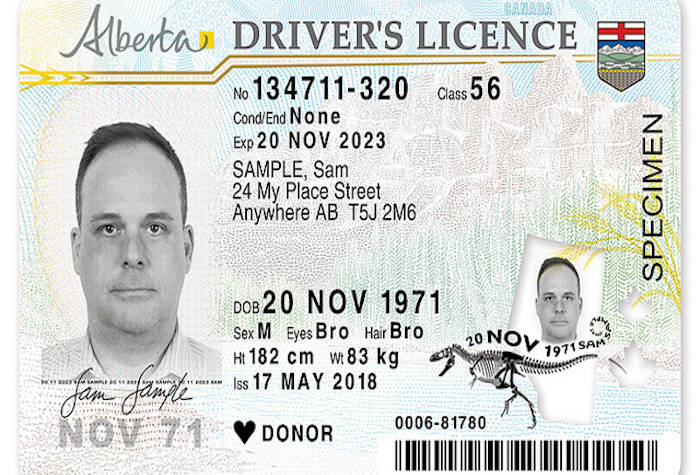Alberta is redesigning its driver’s licences and including one change that was 66 million years in the making.
The new licences will have modern, updated security features such as clear windows, laser engraving and three-dimensional embossing to foil counterfeiters.
They will also have imagery reflecting Alberta’s landscape and history, including the dinosaur Albertosaurus.
Remains of the T.-rex-type predator from the late Cretaceous period were first found in Alberta.
Service Alberta Minister Stephanie McLean said the province is breaking ground by blending security and safety with artistic design.
“It’s the first time in North America that these security features have all been included on one ID document,” McLean said Wednesday. “The dinosaur I’m particularly excited about.
“I was proud to be able to choose that because it really represents some uniqueness of Alberta … it’s a fun character to include and also adds to the security element (of the card).”
It’s the first redesign in almost a decade.
The driver’s licences are being produced now and will cost about $1 million less annually to produce because of technological advances, McLean said.
Albertans will get the new licences as their old ones expire.
The cards have three windows, including one in the shape of Alberta. They also change colour from one part of the card to the other and make a tin-like sound when dropped on a hard surface.
There is raised printing on some of the data and on the dinosaur. The dinosaur’s tail continues onto the back of the card and appears to extend through the Alberta-shaped window.
Government-issued ID cards are also being updated.
Health Minister Sarah Hoffman said the province is still looking at overhauling its health-care cards, but nothing firm is in the works.
“During tough economic times, making decisions about investing in these types of things is challenging,” she said.
Alberta first began thinking about changing its health cards in 2008. In 2015, the auditor general urged the province modernize them, particularly by adding an expiry date.
The cards are paper, making them easy to rip or fray, and have no photo ID.
Canadian Press



